Customer Services
Copyright © 2025 Desertcart Holdings Limited
Desert Online General Trading LLC
Dubai, United Arab Emirates
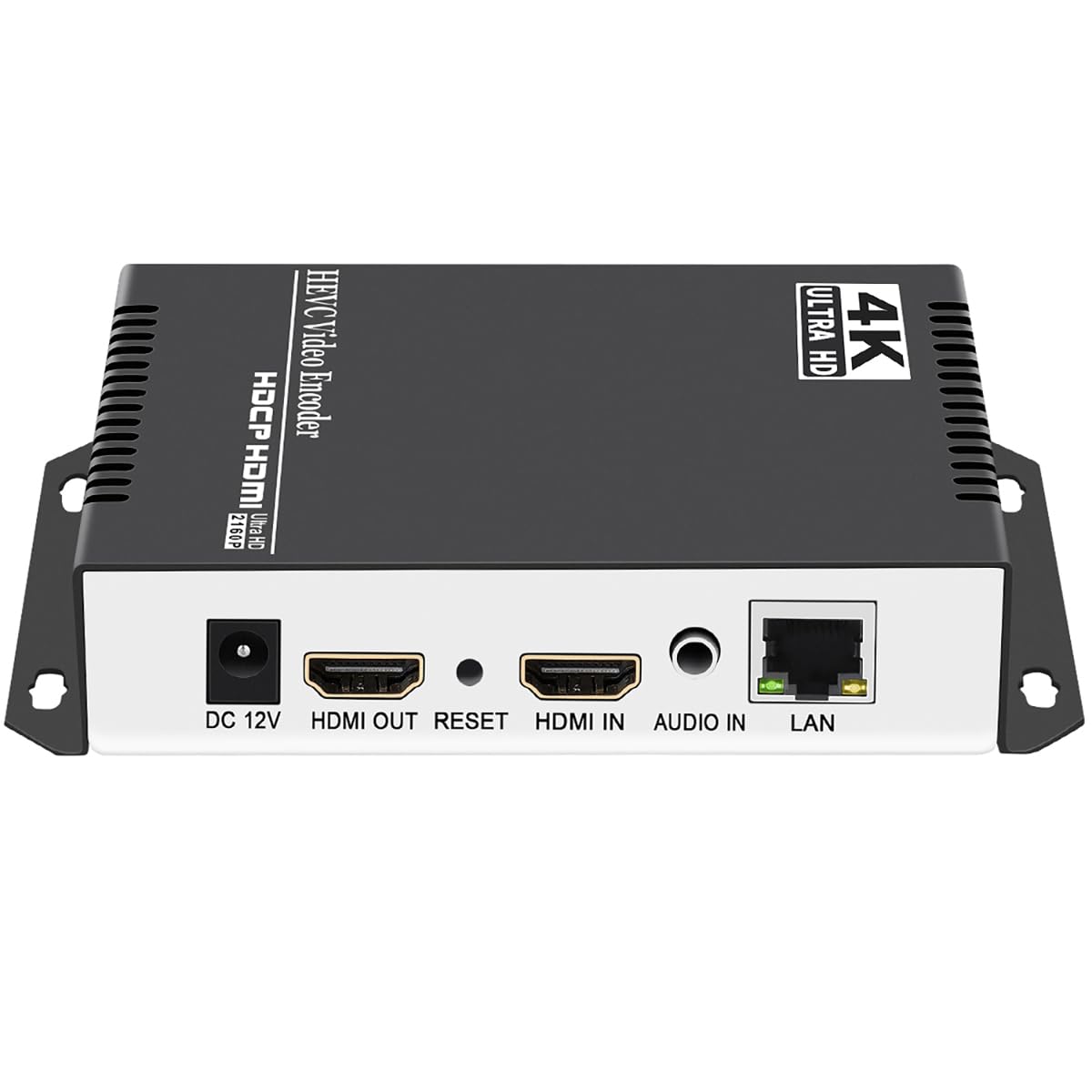

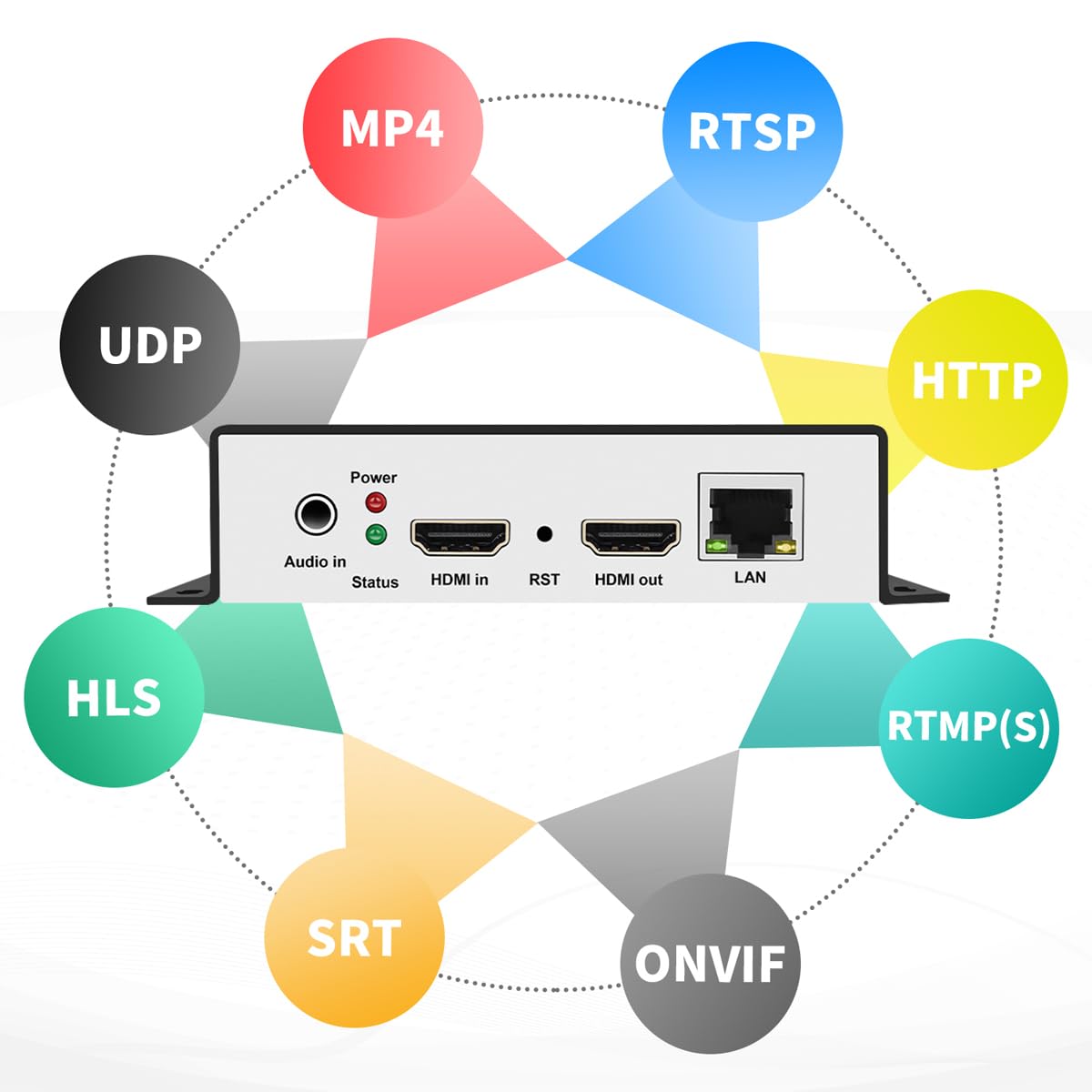
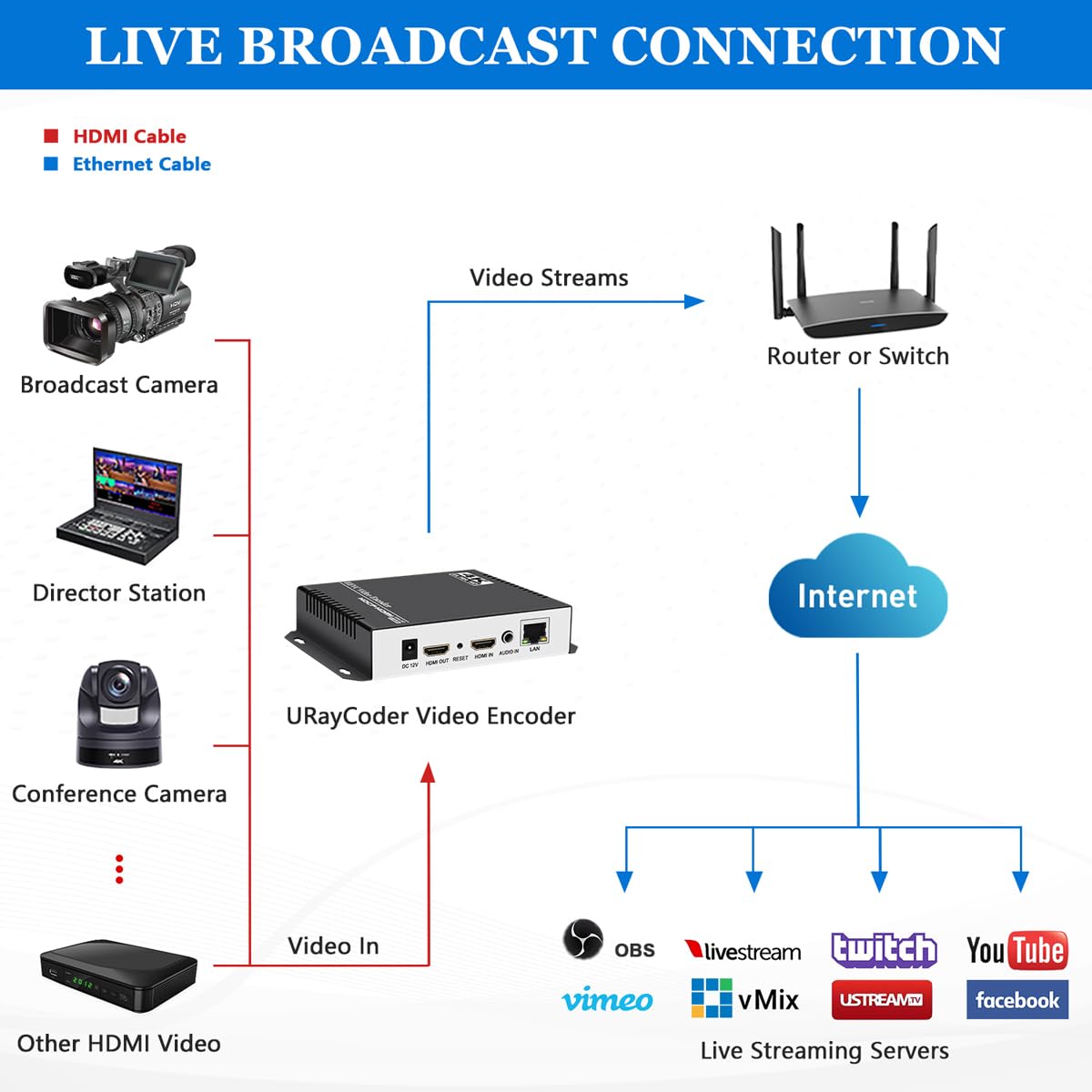
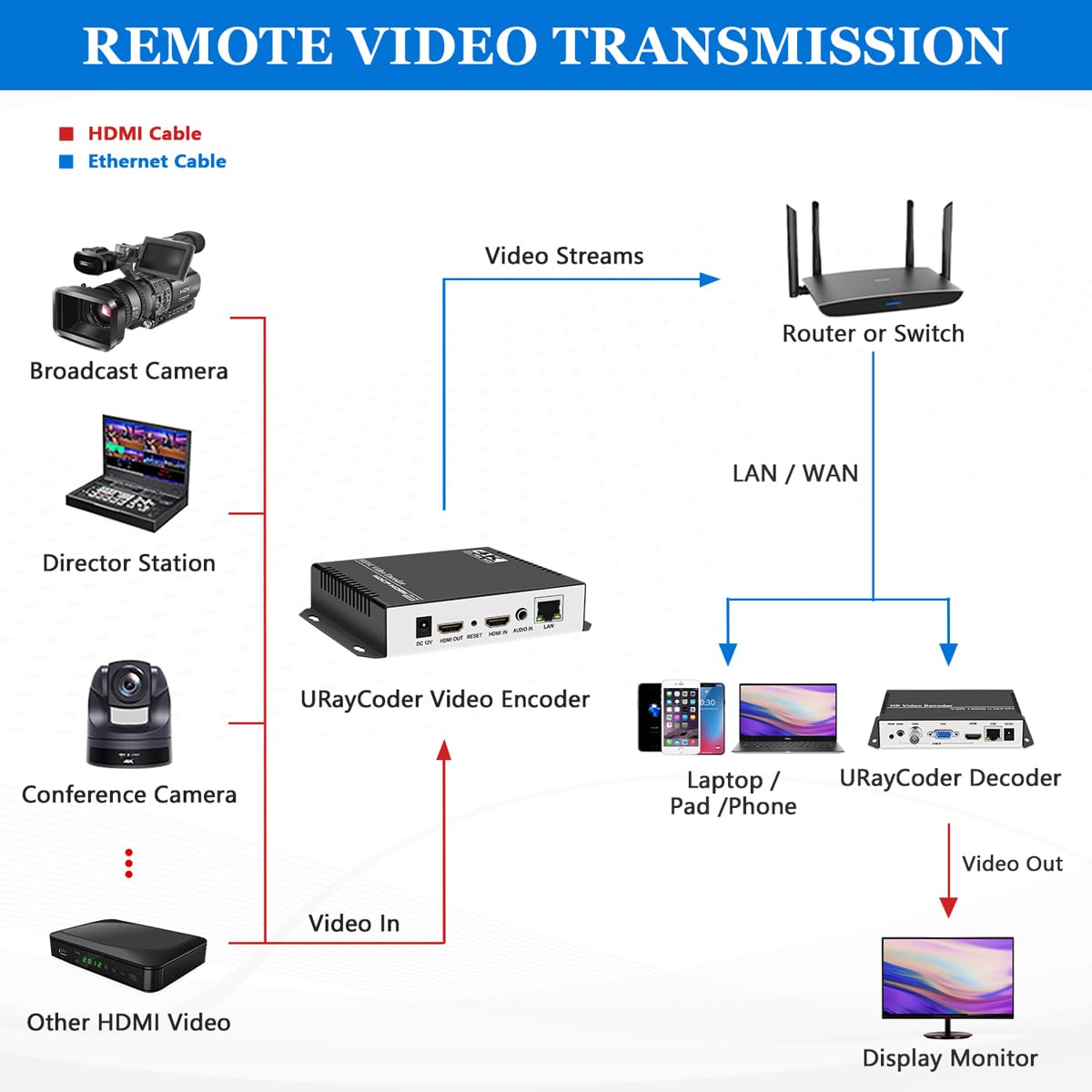
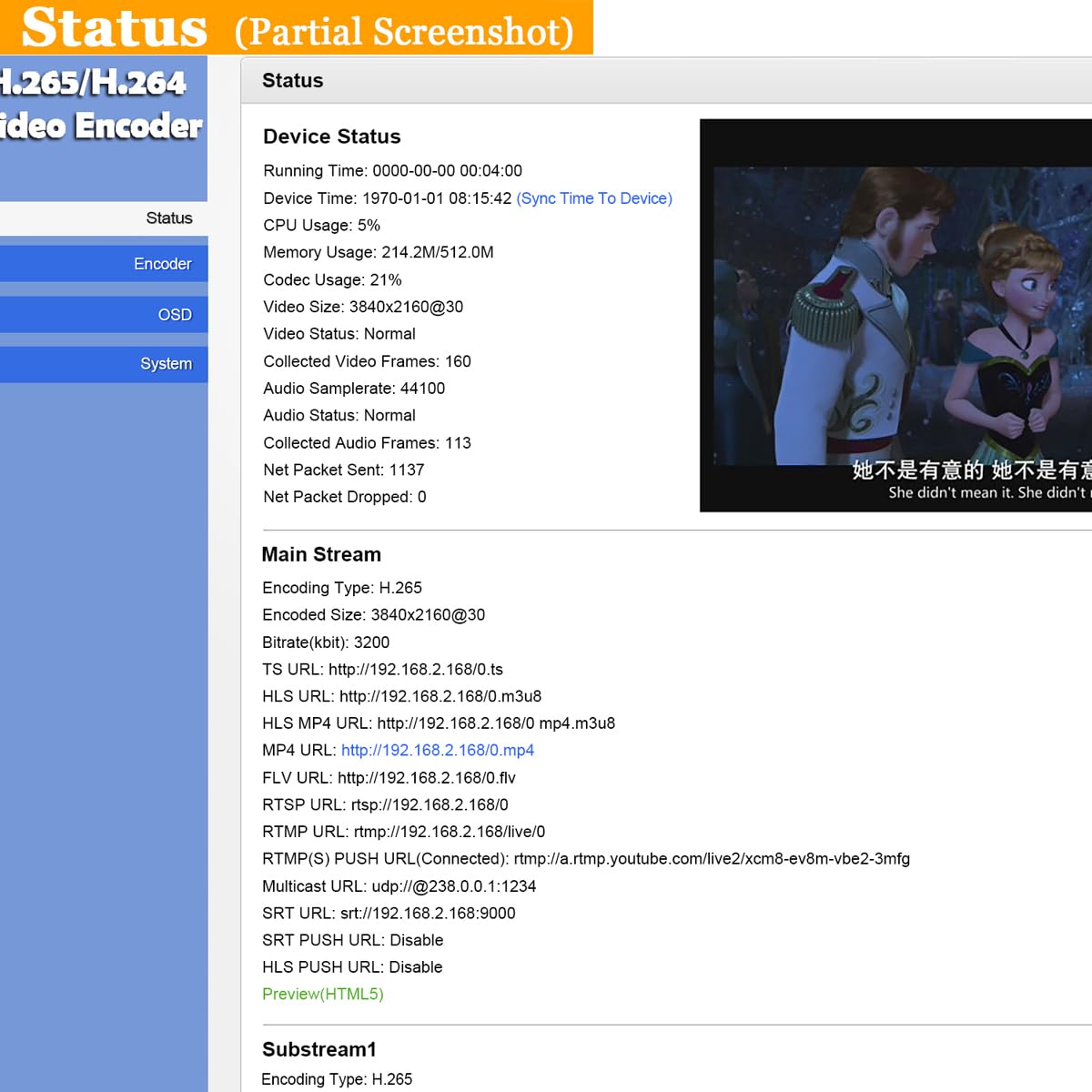
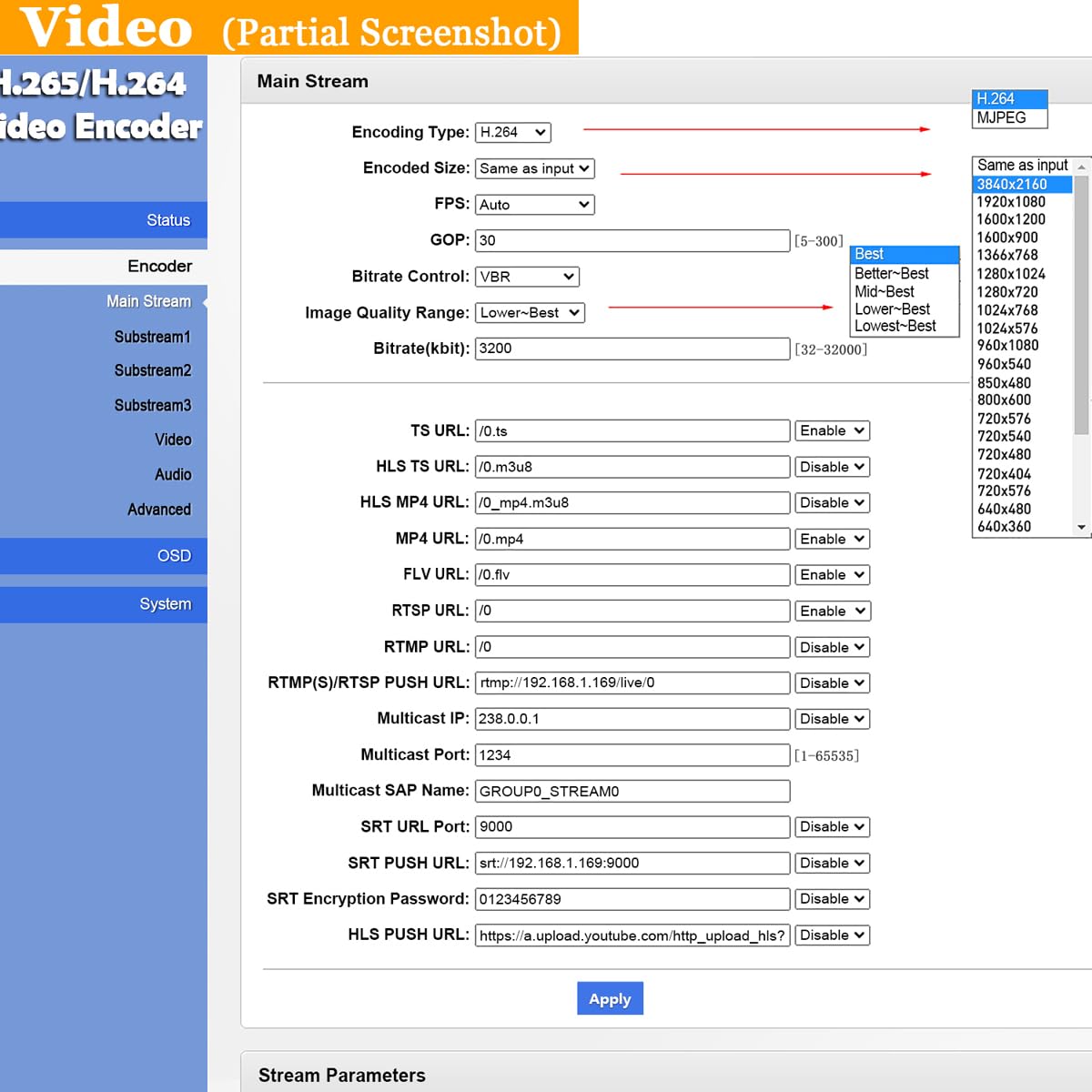
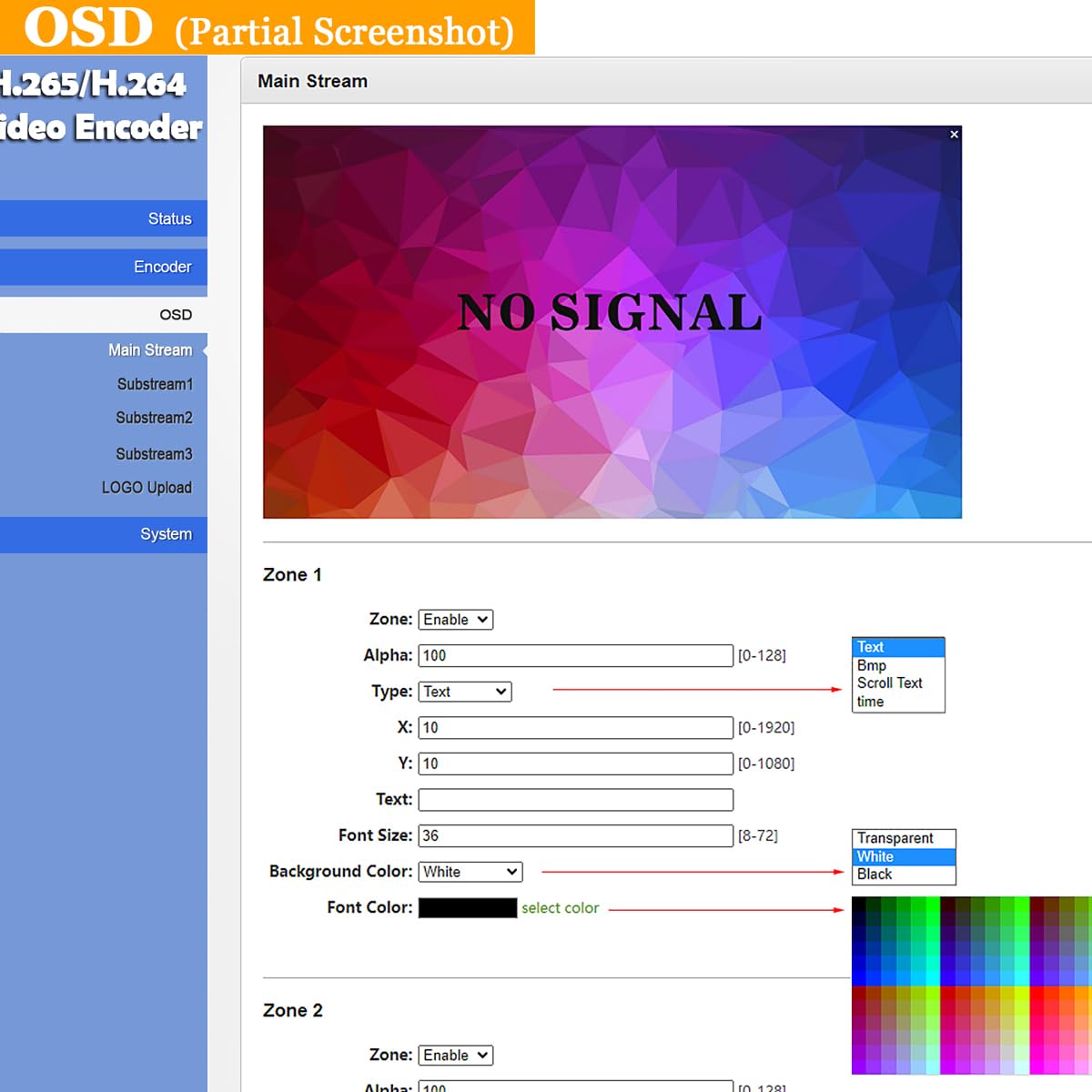
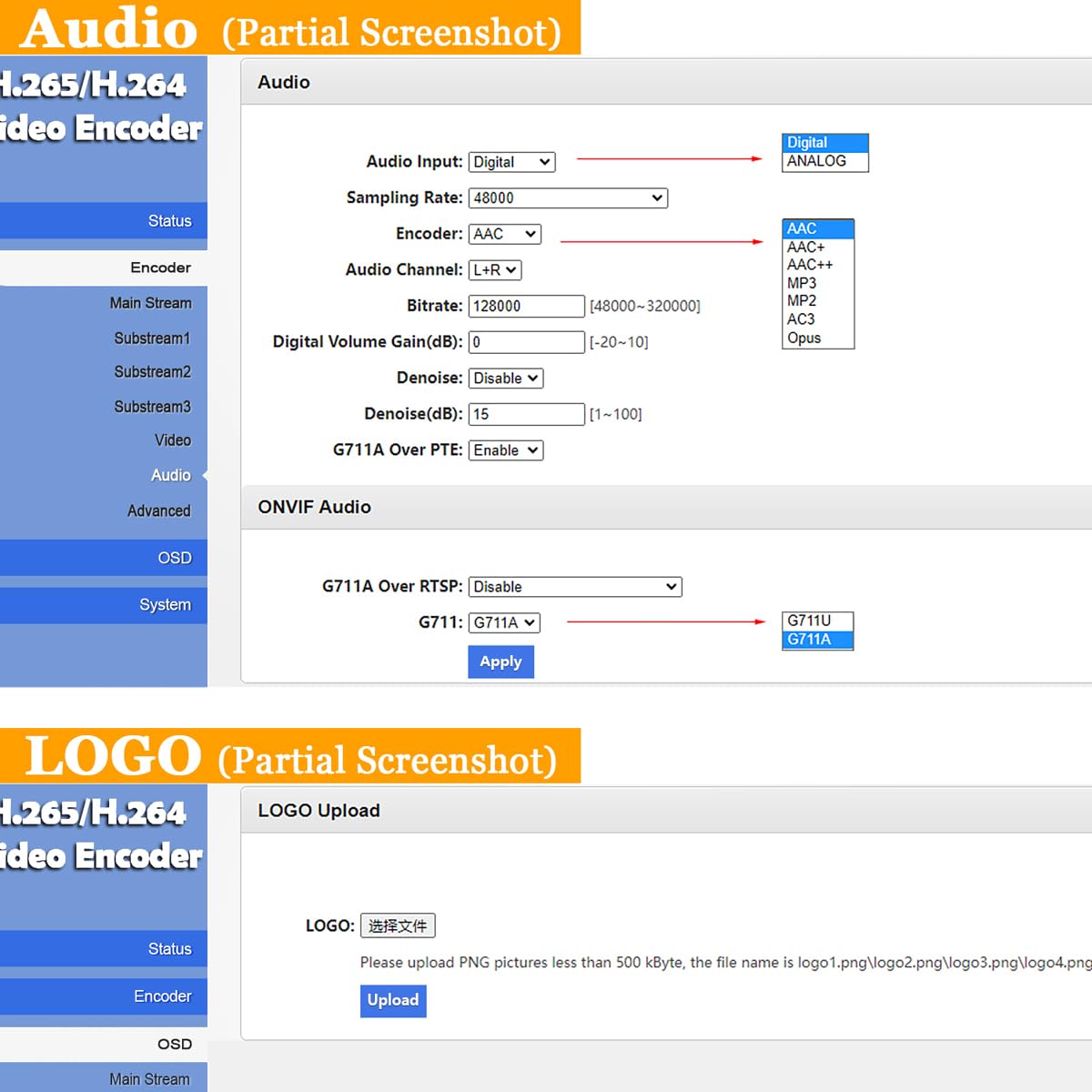
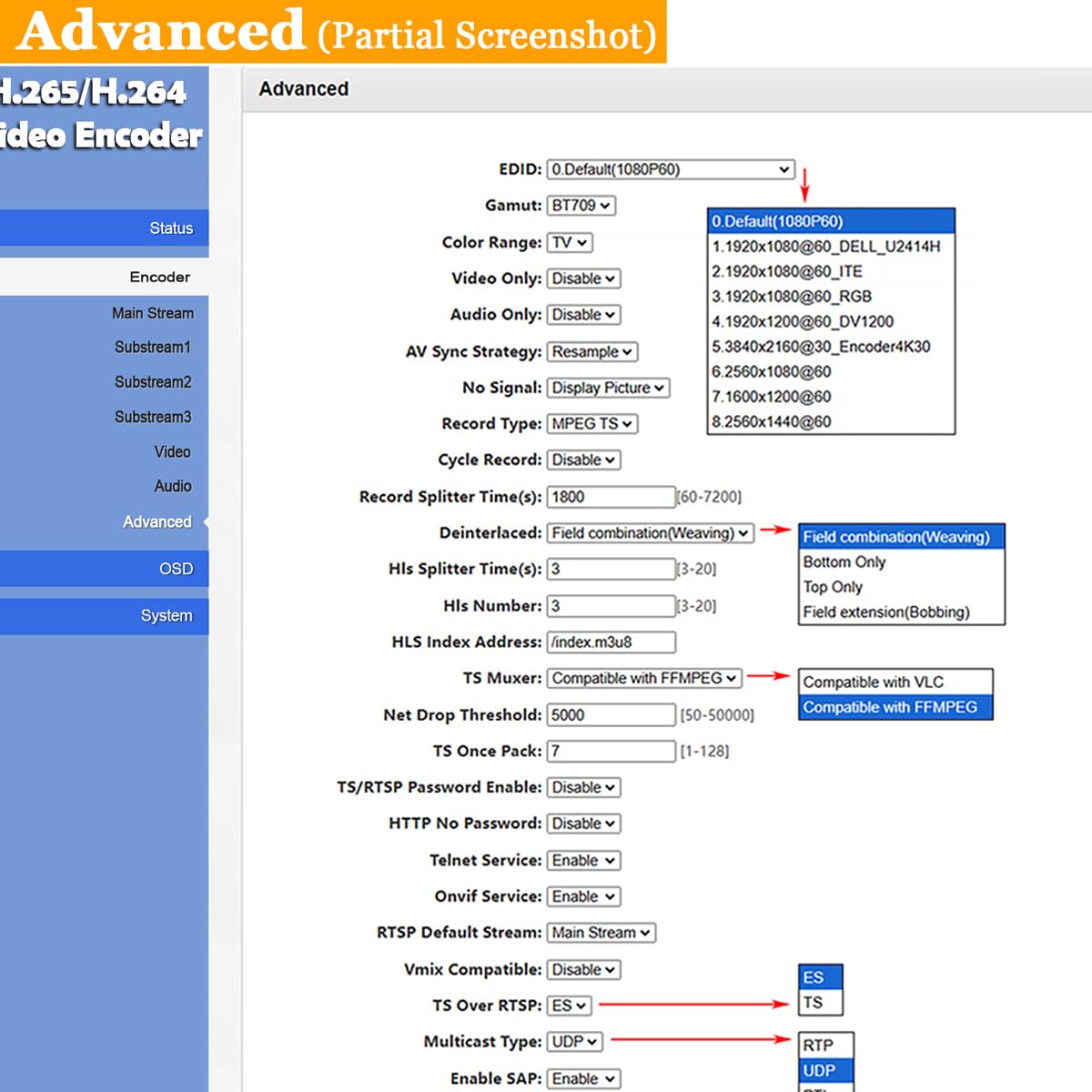
🚀 Stream Like a Pro, Reach Like a Boss!
The URayCoder H265 H264 4K HDMI Video Streaming Encoder is a compact, professional-grade hardware device designed for ultra-high-definition live broadcasting. Supporting up to 4 simultaneous video streams and over a dozen streaming protocols, it empowers content creators and managers to deliver flawless 4K UHD video to multiple platforms like YouTube and Facebook with customizable overlays and lifetime technical support.

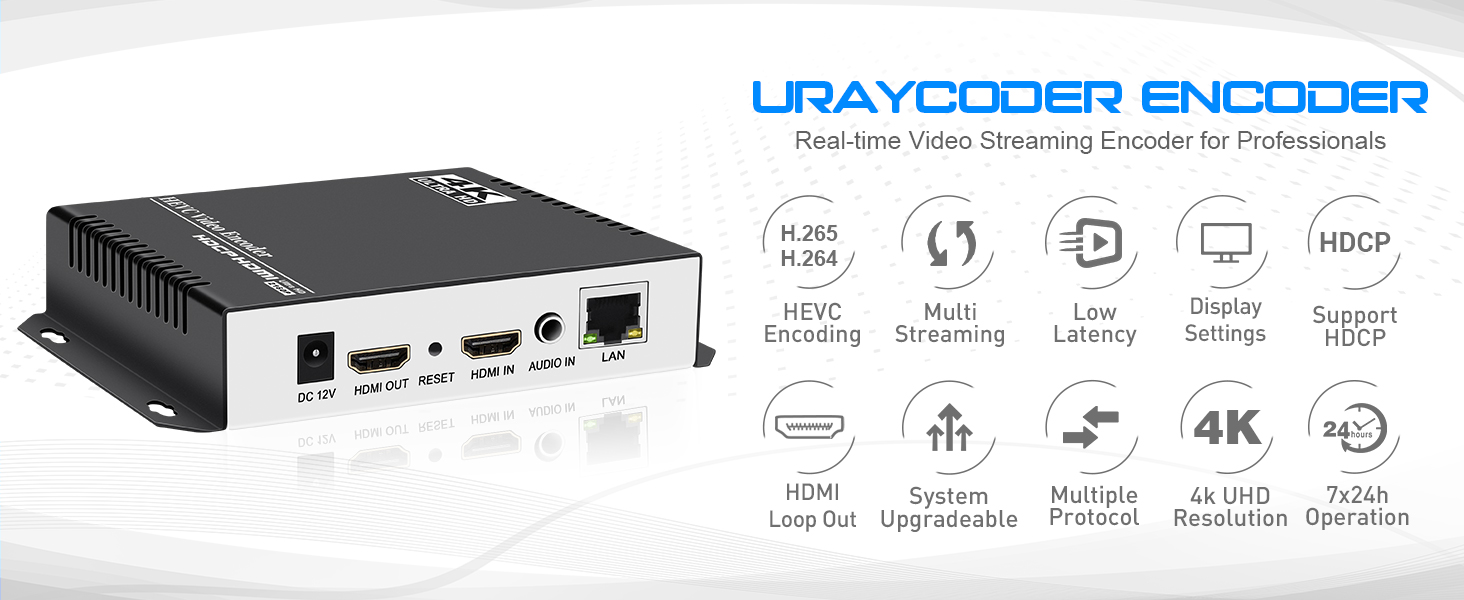
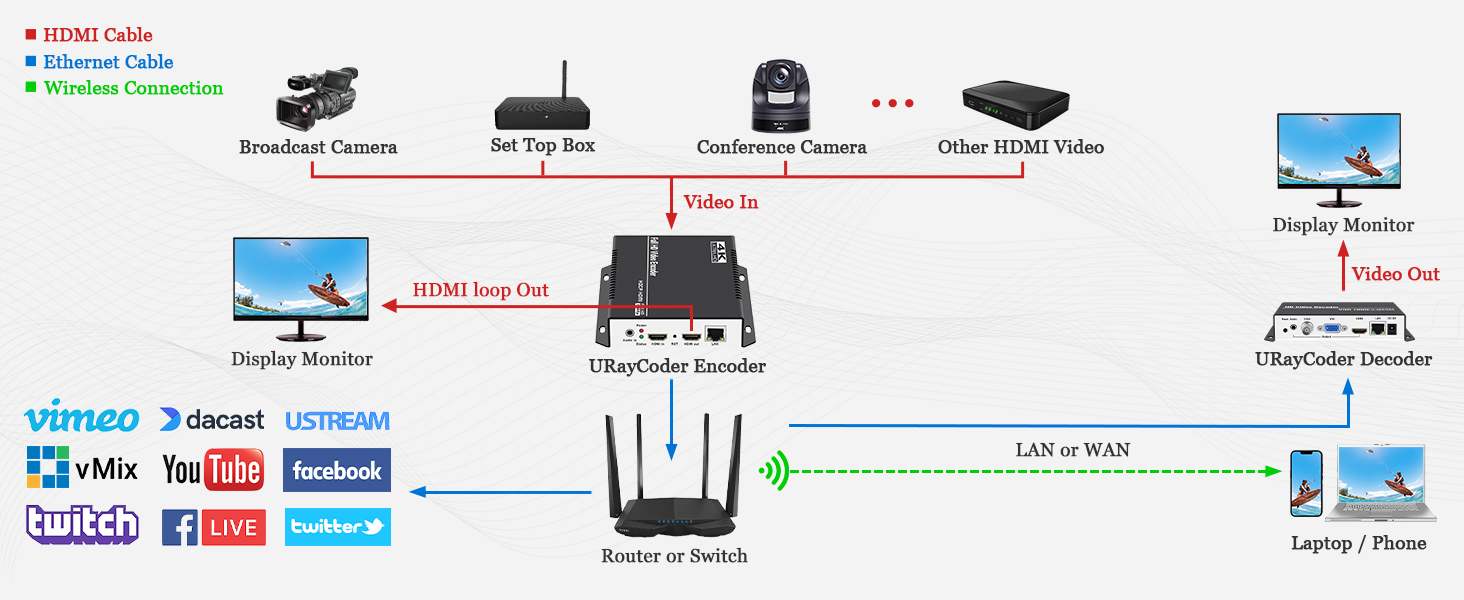









| Brand Name | URayCoder |
| Item Weight | 1.1 pounds |
| Product Dimensions | 7.09 x 5.12 x 0.98 inches |
| Item model number | UHE265-1L-4K |
| Is Discontinued By Manufacturer | No |
| Color Name | Black on top and silver on bottom |
| Special Features | Video Encoding |
S**S
Impressive number of features and customizations
I'm actually quite impressed with this device's features and customization options however after playing around I found out that it's probably best not to stray too far from the defaults.First, the setup. Setup is the biggest hurdle you MAY have to clear. The device comes configured with a default IP address of 192.168.1.168. If your home network uses the 192.168.1.XXX subnet(range), which is actually the most common default for most home routers (another reasonably common default if 192.168.0.XXX), then you'll be good to access the device straight away over your network by just plugging into your network and entering http://192.168.1.168 into your browser. If your network assigns IP addresses in any other range than 192.168.1.XXX, then you need to take a few extra steps and connect the device directly to your computer and temporarily modify your computer's IP address so that is in the same range, then log into the device and change it's network address to one that is your network's default. The instruction manual takes great care to describe this process in detail, and this process isn't unique to this device, it's relatively common to need to do this when setting up any network device you want to access remotely. I'm a computer professional so this part was a piece of cake for me, but with the instructions should be doable by just about anyone.While setting up the device, I figured this was the best to update the firmware to the latest and greatest. Unfortunately, they do not have the latest (or any) firmware on their website. They direct you to contact them via email to request it. I wasn't happy about this as I figured it was going to delay my progress in setting up the device but I sent of the email thinking I'd get a response the next day or something. Instead, I received a reply within 1 minute. In fact, a short series of email exchanges with the support individual were so fast that it was faster than most chat sessions I've had with tech support. In the end, we determined that I already had the latest available firmware and an update was not necessary. They also sent me a PDF version of the user manual so I could keep it electronically. VERY RESPONSIVE SUPPORT.The device was up and running in a few minutes. I tested viewing it with VLC on my computer and it worked great. I also tested it with VLC on an Amazon Fire TV Stick attached to a bedroom TV to test watching on a regular TV instead of a computer and navigating the VLC app menus would sometimes cause screen glitches but that was within the VLC app and an VLC app issue. When VLC actually started streaming, the picture was clear and the experience excellent.I did have a couple of issues that most users probably will not encounter. I do not have the most common setup. That is: Source device (i.e. cable box, etc) -> Encoder -> TV. Instead, I have Cable Box -> Encoder -> Home Theater Receiver -> TV. It worked great until I turned off my TV, and actually via CEC control, the entire home theater system. The cable box remained on, as it should so that it could still provide a picture to the encoder and you could continue to stream the cable box source even if the attached TV is off. The encoder did continue to be reachable and you could stream, PERFECT (no problems here)! The problem happened when I tried to turn the TV back on. The TV / receiver would switch to the input but no video would be displayed until I turned the cable box off and then back on. It was as if the HDMI signal did not automatically "re-sync" through the encoder if the video source was never turned off and then back on. I could just turn the cable box off and on as a workaround, but the extra step I never had to do before bothered me. I changed the crappy HDMI cable I pulled out of the drawer to connect the encoder to the cable box to a certified cable I purchased on Amazon thinking that crappy cables sometimes cause these kinds of issues. Unfortunately, there was no change. And truth be told, the connection between the cable box and encoder always continued to work as I could continue to stream, it was between the encoder and Home Theater receiver and TV that the video link was broken. I contacted support for ideas, but this time they never got back to me. I never bothered following up, because the next day I also changed the cable between the receiver and the TV (still have not changed the cable between the encoder and the receiver) and re-ran my Samsung Smart TV's input detection which I had not re-done since the encoder was installed. I'm not sure which of the last 2 changes it was (the new cable between the receiver and the TV, or re-running the Samsung Smart TV's input detection) but the problem was solved thereafter. I'm willing to put money on it was re-running the Samsung TV's input detection. I guess there is a reason it runs through an input detection diagnostic. So keep that in mind if you have anything similar.Beyond that, running the defaults works pretty darn good. I can never leave good enough alone and turned up most of the quality settings way up. Could I see a difference remotely? Honestly, no, I couldn't notice any appreciable difference but I knew it had to be better. However, turning up the settings increased latency and also after hours would cause the device to not stream smoothly as if it was overwhelmed. Changing the settings back to something much closer to their defaults fixed all those issues and I can't say I'm upset as the picture still looks great. Moral of the story: Don't mess with it if it ain't broken.I purchased this device to replace my SlingBox, which is going end of life in November of this year, that I used to watch my primary home cable TV subscriptions at my vacation home. The SlingBox does have the advantage of transmitting back remote control commands so you can change channels and control just about bit of your cable box remotely. This device is only and encoder. It will only take the video signal, encode it and send it to your streamer. It has no source control capabilities at all. If you are using it to display fixed video stream like a camera then none of this applies. On the other hand, if you are using it to watch your cable box, then you need some other method to remote control your cable box. I already had a Harmony Hub integrated into my Home Theater system. I can use the Harmony Hub app on my cell phone as a remote control and it works remotely too! Also the Harmony Hub integrates with Alexa, so you can direct her to "Alexa, Change channel to Food Network", or "Change channel to 15" and she will do that through the Harmony Hub. Since my Alexa at my vacation home is on the same account, I can also give my echo show at my vacation home the same commands and it will control my cable box back at my primary home and change the video I'm viewing while streaming at my vacation home!. Cool! Again, this has nothing to do with this encoder as it just sends whatever video the cable box is outputting, the control is all via the Harmony Hub and optional Alexa integration, but the problem is solvable.As stated earlier, if you turn the quality settings up too high, the encoder works much harder to encode the video before sending it out so there is more of a delay in what you see relative to what the Cable box is outputting in real time. So, remote control commands can seem to take longer (or a long time, like a minute) to be seen remotely. When I lowered my quality settings a bit, the delay is acceptable. I can't say how long as it seems to be variable to a degree but acceptable. I'll probably play with the encoder settings again, maybe even reset them completely to default. I think at default they were ALWAYS under 5 seconds, maybe just 2-3 seconds.In Summary, this is a pretty impressive device that does it's just well. I can't say that I notice much quality difference between the h.264 and h.265 settings (a little if I look VERY closely) but the h.265 does have increased lag. If you watching a fixed video source, then probably even 10-20 seconds of lag is a non-issue. If you are trying to control the video source remotely, then it's like trying to drive while looking in the rear view mirror. You have to anticipate what is happening as you look at what happened 10-20 seconds ago. The SlingBox had the same issue with lag.I got this to work as I needed / expected. I'd purchase this again. I might even try and save some money and purchase the h.264 model next time as this I'm finding this model has an overkill number of features and settings I either don't need, or don't really provide benefit I notice streaming cable quality video.Nice device. Well made.
C**E
Running Flawlessly for Almost a Year Now!
This thing is great! I have it connected to the HDMI output of my Living Room AV Receiver so that I can remotely view and control my AV devices using an app on my mobile device. I can actually view the live TV image right on my mobile device. I've had it running 24/7 since December 2024, so almost a year now, and not one hiccup or need to power-cycle the device. It's worked flawlessly. It also stays very cool, doesn't get hot at all. This is a great value compared to similar products that cost 2x or more. I'm currently encoding the video in H.265 and the latency is also great - almost zero. It supports many simultaneous encoding formats as well, in case you need to encode the video in other formats for other uses. I've been very impressed with the quality of the device, given it's very reasonable price point. If you need to get an HDMI video feed onto the network (either LAN or WAN) I highly recommend this device!
S**.
Absolutely Outstanding 4K Streaming Encoder!
I’ve been using the H265 H264 4K HDMI Video Streaming Encoder for several months now, and it has exceeded every expectation. The setup was incredibly straightforward—within minutes, I had it connected to my camera and configured for my live streaming platform. The web interface is clean and intuitive, making it easy to fine-tune the bitrate, resolution, and network settings. Quality:Video Quality: The picture quality is stunning. It delivers crisp, ultra-clear 4K video with virtually no latency. Whether I’m encoding in H.265 for bandwidth efficiency or H.264 for compatibility, the streams are rock-solid and look professional.Reliability: I’ve streamed multiple live events, each several hours long, without a single glitch or drop. The hardware runs cool and stable even under heavy workloads. This encoder inspires confidence that your stream will stay up no matter what.Versatility: It supports RTMP, RTSP, SRT, and HLS out of the box. I can stream to YouTube, Facebook, and my Custom Channel simultaneously, which is a huge plus. Also, the audio embedding works perfectly.Value: For the feature set and performance, this encoder is worth every penny. You’d typically expect to pay much more for a comparable device. If you’re serious about high-quality live streaming and want a reliable, professional-grade solution, look no further. Highly recommended!
F**E
Neat but hard to use
The setup steps are well written and you can setup the encoder in about an hour if you are familiar with computers. For my use case we wanted to stream to youtube. After setup, we saw that we were connected with our streaming key to youtube, however we could not start the stream. So additional setup that aren't in the steps is required.It turns out the audio wasn't capturing so the stream wouldn't start. We reached out to tech support, and they were very responsive. They helped us tweak some settings on the encoder, after which the stream would start. You have to switch the audio to one channel, either L or R. After that, we were getting audio frames captured. However, we couldn't hear the audio, and it turns out you need a mic with it's own power. We didn't have that. Overall it seems to be a good product, but be ready to experiment with the settings!
Trustpilot
3 weeks ago
1 month ago